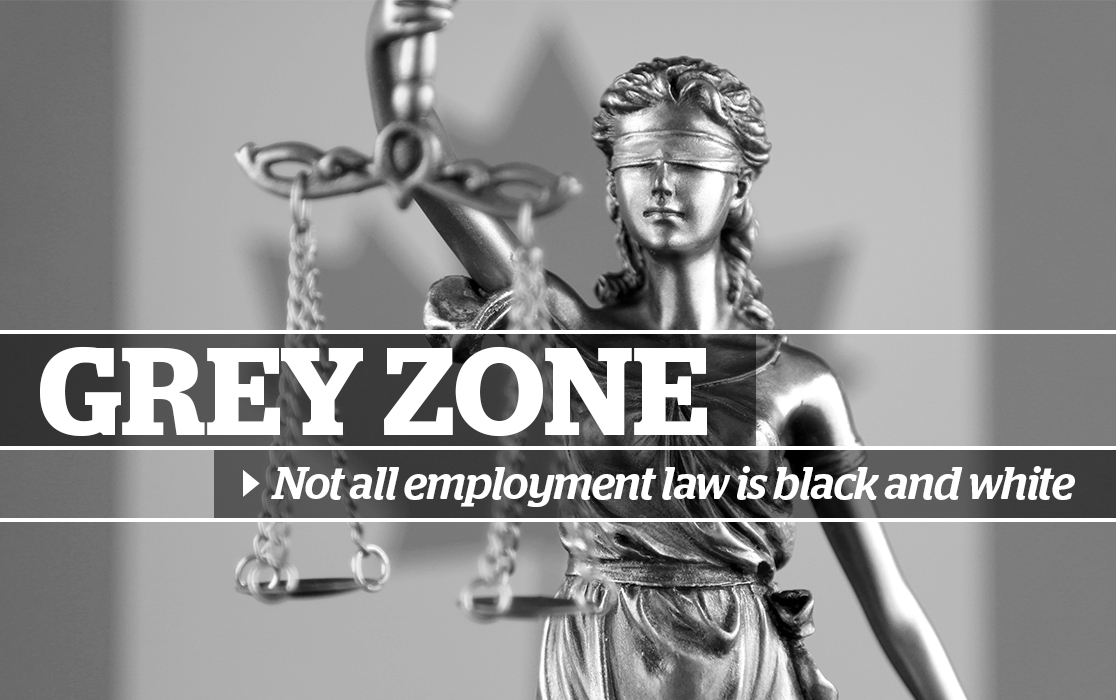

Columns/Blogs
Features
Compensation
Legal
Terminations/Wrongful Dismissal
Was it a quit, or a dismissal?
By John Hyde

EDITOR’S NOTE: ‘Grey Zone: Not all employment law is black and white’ is a weekly series, in partnership with John Hyde of Hyde HR Law in Toronto. This series takes a deeper look at issues in which senior workplace leaders and HR professionals need to consider legal implications.
“I quit.”
These two words can be music to an employer’s ears when coming from a problematic employee.
As many employers know, an employee who decides to leave an organization out of their own volition is not entitled to notice and/or severance pay, either by statute or at common law (judge-made law). Those entitlements are typically reserved for employees terminated without cause.
Accordingly, when a problematic employee says, “I quit,” many employers quickly assume they have dodged a bullet and do not owe the employee any payments (aside from what the employee has already earned). Unfortunately, it is not always that simple.
The distinction between a resignation and a dismissal can be extremely grey — what appears to be a resignation can in fact (and in law) be a dismissal, thus potentially entitling employees to significant compensation. This is referred to as the law of constructive dismissal and, perhaps one of the most grey areas of employment law.
Given what is at stake for employees and employers, this distinction is a frequently litigated issue, which employers would be well-served getting right.
Constructive dismissal
A “constructive” dismissal is one which is deemed to have occurred as a result of an employer’s actions, even absent the employer terminating the employee. In most situations, an employee must actually resign in order to claim constructive dismissal, further adding to the confusion.
The Supreme Court of Canada has confirmed that a constructive dismissal can occur in two ways:
- the employer breaches a substantial term of the employment contract
- the employer’s actions demonstrate that it does not intend to be bound by the contract.
Breach of a substantial term
At its core, the contract of employment involves an exchange of labour for compensation.
As such, an employer who unilaterally changes the amount or manner of compensation will typically be found to have breached a substantial term of the contract. This need not be limited to someone’s base salary and can include any form of compensation, or benefits, which are integral to the employment contract.
To further complicate the issue, COVID-19 has temporarily changed the rules regarding constructive dismissal.
In Ontario, for example, employers are currently permitted to cut an employee’s salary “as a result of COVID-19” and employees cannot complain to the Ministry of Labour about it. What is not clear, however, is whether these temporary rules preclude employees from suing employers for constructive dismissal in court.
Other breaches include relocating an employee, re-assigning their core tasks and duties, or changing key reporting relationships.
In all such instances, each case will turn on its own particular set of facts and, the extent of the change.
One option for employers considering such changes to the employment agreement, would be to offer the employee sufficient notice of the change, with the choice to either remain in their employment with the changed terms or terminate the employment on a set date.
Series of acts
In many instances of constructive dismissal, employees cannot point to a single contractual breach, yet they need not do so to prove that a constructive dismissal occurred.
The “test” can also be met if a series of actions taken together, show that the employer intended to no longer be bound by the employment contract.
This aspect of the test will be satisfied if an employee can prove, for example, that a pattern of bullying, harassment, and/or dishonesty by the employer (or its managers) made the employment intolerable.
One way for employers to mitigate against such claims is to maintain and implement clearly defined workplace policies for employees to express their concerns as they arise, including as they relate to harassment or any adverse treatment.
If employers can demonstrate that, despite such policies, employees simply failed to raise any of their concerns until after their resignation, those constructive dismissal claims will have less credibility.
Did you really mean it?
Employers must also confirm that an employee actually intended to resign, before assuming that they have. The law is that, a resignation must be “clear and unequivocal.”
Failing such confirmation, an employee yelling “I quit” in the heat of the moment, or not returning for their next scheduled shift, may not prevent them from changing their minds and later claiming that they have been wrongfully dismissed.
When faced with a resignation, employers must, at the very least, confirm the employee’s clear and unequivocal intention to resign from their employment, particularly in acrimonious circumstances.
In all such cases, employers would be wise to seek the assistance of experienced employment counsel to ensure a seemingly innocuous termination does not end up amounting to much more.
 John Hyde advises management on all aspects of employment and labour law, including representation before administrative tribunals, collective agreement negotiation, arbitrations, wrongful dismissal defence and human rights.
John Hyde advises management on all aspects of employment and labour law, including representation before administrative tribunals, collective agreement negotiation, arbitrations, wrongful dismissal defence and human rights.
Oren Barbalat, a senior employment law associate at Hyde HR Law, co-wrote this commentary.
Print this page